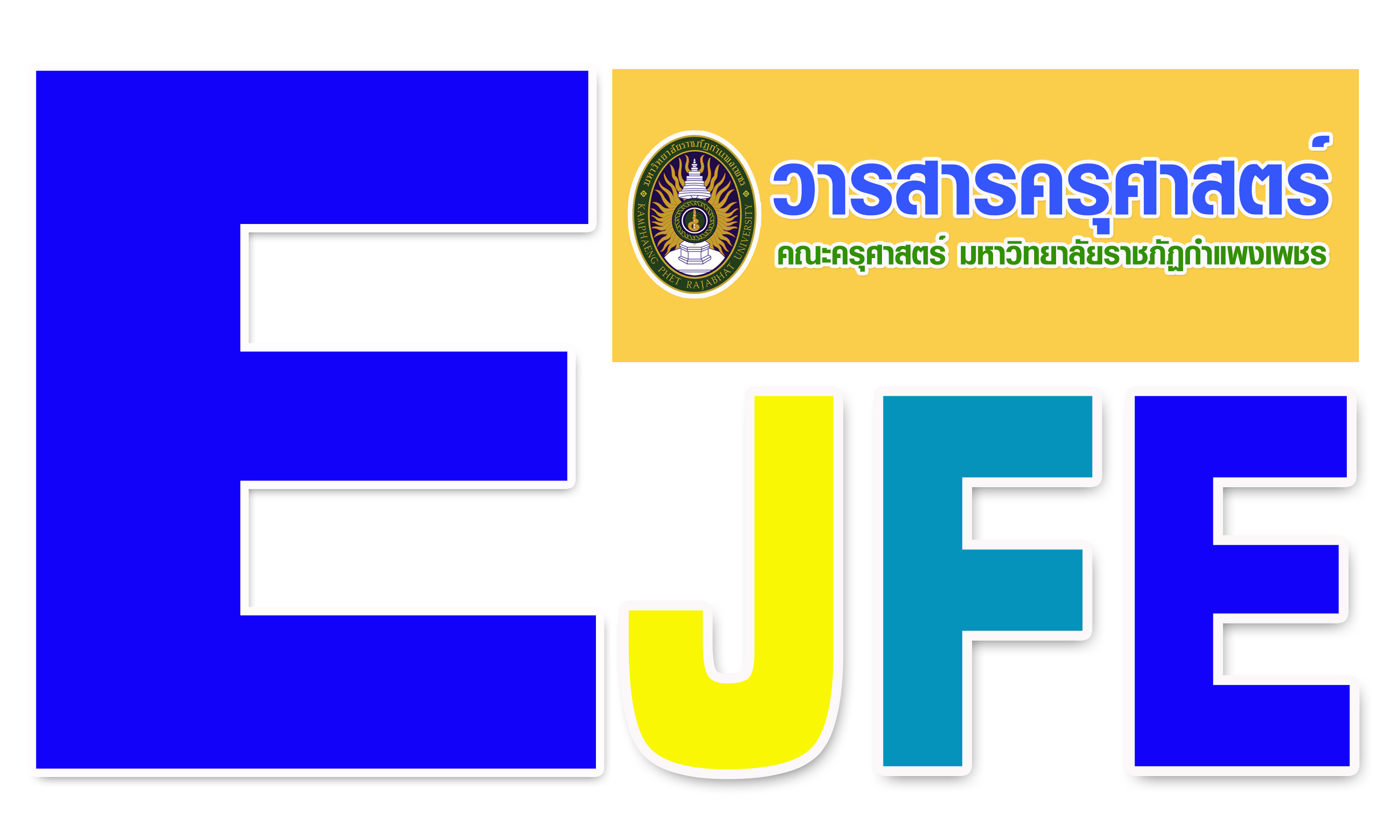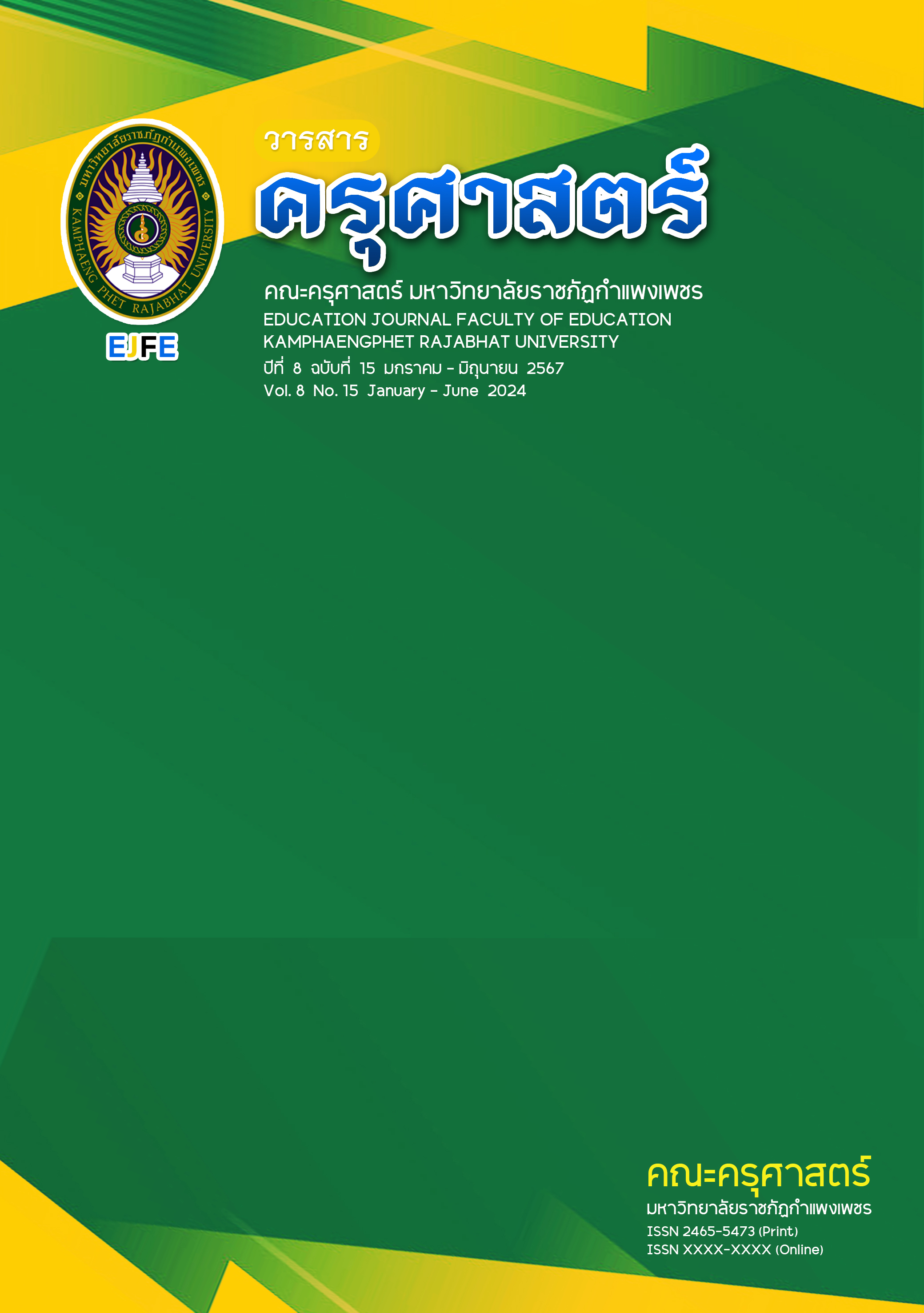The Effect of Implementing Mathematics Learning Activities Using the Jigsaw Technique Combined with Problem-Based Learning (pbl) In the Chapter on Relation and Function to Enhancing Mathematical Achievement and Mathematical Problem-Solving Ability for 12th- Grade Students
Main Article Content
Abstract
This research aimed to compare mathematical achievement and mathematical problem solving that compare before and after learning management and with criteria 70 percent by using jigsaw technique combined with problem-based learning. The samples were 14 grade 12 students. The research tools were lesson plans, mathematical achievement test and mathematical problem-solving test. The data was analyzed by arithmetic mean, standard deviation, t-test dependent, Wilcoxon matched-pairs signed ranks test, Friedman test and One sample t-test.
The results revealed that 1) mathematical achievement and mathematical problem solving on relation and function chapter after learning management higher than before learning management significantly at the statistics 0.5 level and 2) Both mathematical achievement and mathematical problem solving on relation and function chapter higher than 70 percent criteria with significantly at the statistics 0.5 level.
Article Details

This work is licensed under a Creative Commons Attribution-NonCommercial-NoDerivatives 4.0 International License.
CC Attribution-NonCommercial-NoDerivatives 4.0
References
ชมนาด เชื้อสุวรรณทวี. (2561). การเรียนการสอนคณิตศาสตร์. กรุงเทพฯ : โรงพิมพ์แห่งจุฬาลงกรณ์มหาวิทยาลัย.
ชุติกาญจน์ เปียงใจ. (2562). การจัดการเรียนรู้แบบร่วมมือด้วยเทคนิคจิ๊กซอว์เพื่อส่งเสิรมทักษะการทำงานกลุ่ม ในสาระการเรียนรู้คณิตศาสตร์ ของนักเรียนชั้นมัธยมศึกษาปีที่ 2. วิทยานิพนธ์ ศษ.ม. (คณิตศาสตร์ศึกษา). เชียงใหม่ : บัณฑิตวิทยาลัย มหาวิทยาลัยเชียงใหม่.เบญจพร รอดอาวุธ. (ม.ป.ป.). เทคนิคการสอนแบบเติมเต็ม (Jigsaw). วารสารการจัดการความรู้. ฉบับพิเศษ. 21-25.
พระพันธวัฒน์ ธมฺมวฑฺฒโน. (2565). การจัดการเรียนรู้แบบใช้ปัญหาเป็นฐาน (Problem,-based Learning). วารสาร มจร อุบลปริทรรศน์ 7(1). 967-976.
วีรพล แสงปัญญา. (2562). จิตวิทยาการเรียนการสอน. กรุงเทพฯ : สำนักพิมพ์จุฬาลงกรณ์มหาวิทยาลัย.
วีระสิทธิ์ มาตอำพร. (2563). การพัฒนาการจัดการเรียนรู้คณิตศาสตร์โดยใช้ปัญหาเป็นฐาน (PBL) ร่วมกับแนวคิดการศึกษาชั้นเรียน (Lesson study) เรื่องการประยุกต์ร้อยละ ชั้นประถมศึกษาปีที่ 6. วิทยานิพนธ์ วท.ม. (คณิตศาสตร์ศึกษา). มหาสารคาม : มหาวิทยาลัยมหาสารคาม.
ศศิธร แม้นสงวน. (2560). โครงงานและกิจกรรมคณิตศาสตร์. กรุงเทพฯ : สำนักพิมพ์มหาวิทยาลัยรามคำแหง.
สำนักงานเลขาธิการสภาการศึกษา. (2550). การจัดการเรียนรู้แบบใช้ปัญหาเป็นฐาน. กรุงเทพฯ : กลุ่มส่งเสริมนวัตกรรมการเรียนรู้ของครูและบุคลากรทางการศึกษา สำนักมาตรฐานการศึกษาและพัฒนาการเรียนรู้ สำนักงานเลขาธิการสภาการศึกษา กระทรวงศึกษาธิการ.
อรจิรา พลราชม. (2563). การพัฒนากิจกรรมการเรียนรู้คณิตศาสตร์ เรื่อง สมการและการแก้สมการ กลุ่มสาระการเรียนรู้คณิตศาสตร์ของนักเรียนชั้นประถมศึกษาปีที่ 6. วิทยานิพนธ์ ค.ม. (วิจัยและประเมินผลการศึกษา). มหาสารคาม : มหาวิทยาลัยราชภัฏมหาสารคาม.
อัมพร ม้าคนอง. (2559). ทักษะและกระบวนการทางคณิตศาสตร์: การพัฒนาเพื่อพัฒนาการ. กรุงเทพฯ : ศูนย์ตำราและเอกสารทางวิชาการ คณะครุศาสตร์ จุฬาลงกรณ์มหาวิทยาลัย.
Dhull, P. and Verma, G. (2019). Jigsaw teaching technique for teaching science. International journal of research and analytical reviews. 6(2). 809-815.
Ernest, P. (2015). The Social Outcomes of Learning Mathematics: Standard, Unintended or Visionary. International Journal of Education in Mathematics, Science and Technology. 3(3). 187-192.
Graaff, E, D. and Kolmos, A. (2003). Characteristics of Problem-Based Learning. Int. J. Engng Ed. 19(5). 657-662.
Karthikayan, C. (2021). Problem Based Learning. From https://www.researchgate.net/publication/355631018_Problem_Based_Learning [5 February 2024].
Khan, L, A. (2015). What is Mathematics – an Overview. International Journal of Mathematics and Computation Science. 1(3). 98-101.
Polya, G. (1985). How to solve it. NJ: Princeton University Press.


